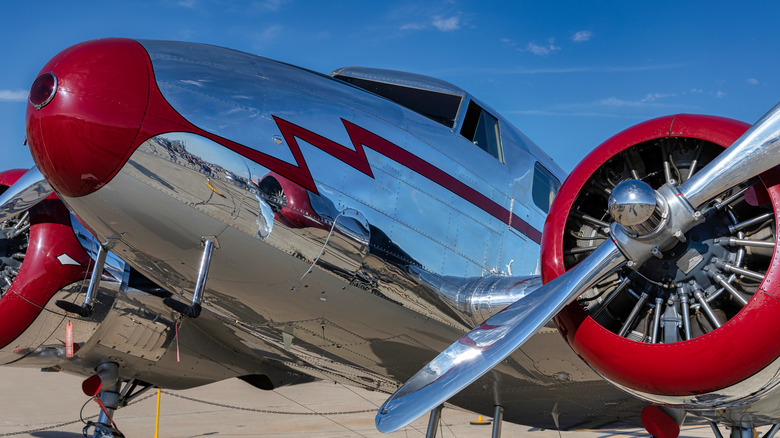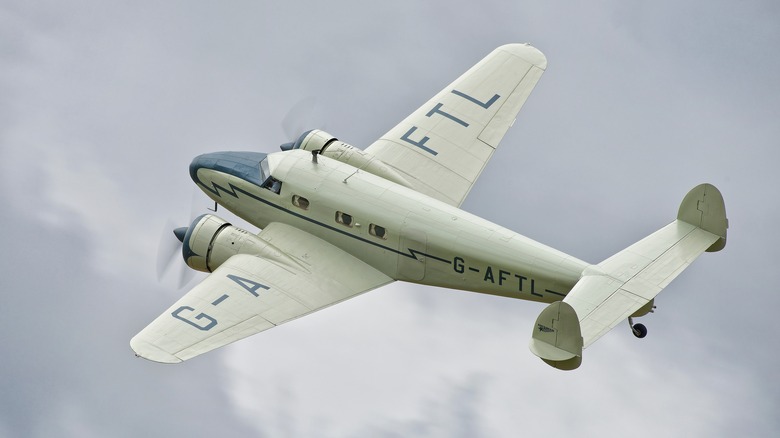Which Engine Powered The Lockheed Model 12-A & How Fast Could It Fly?
Lockheed's Model 12-A was a twin-engine transport plane that the aerospace firm manufactured between 1936 and 1942. It was designed as a smaller version of Lockheed's 10-A, sitting just over 36 feet long with a wingspan of 49.5 feet, earning itself the "Electra Junior" nickname. Lockheed devised the Electra Junior idea after the Bureau of Air Commerce held a design competition in an attempt to find its next feeder plane, basically a transport plane that "feeds" passengers to hub airports from destinations that larger airlines don't travel. Lockheed won the competition and produced roughly 125 of these 12-As, of which many were designated as C-40s and used by the U.S. Air Force.
The USAF, along with the Navy, used this plane for transportation (personnel and cargo), reconnaissance, surveillance, and training. After the war, many Model 12-As were sold off and became corporate planes.
The 12-A sat two pilots in the cockpit and up to six passengers in the body, making it a good vehicle for the military and private companies. Housed under each wing was one Pratt & Whitney R-985-SB Wasp Jr. radial engine. Pratt & Whitney engines have an impactful history in aviation and the company has over 7,000 engines in numerous military vehicles globally, including the F-22 Raptor and F-35 Lightning II.
How fast did the 12-A fly?
Obviously, Lockheed's 12-A wasn't breaking the sound barrier, nor was it anywhere near as fast as today's turboprop engine planes. However, because the Electra Junior was smaller and lighter than its larger sibling, it could travel faster. Not only that, but it was nearly the fastest transport plane at the time. Those Pratt & Whitney radial engines gave the 12-A a cruising speed of 213 mph, but it was capable of a maximum of 225 mph. The Model 10, on the other hand, cruised at 190 mph with a top speed of 202 mph. The engines were rated for 450 horsepower during takeoff and 400 horsepower at sea level.
A competitor plane to the Electra Junior at the time was the Beechcraft Model 18, which used the same Pratt & Whitney engines. During a flight from St. Louis to Miami in 1940, the Model 18 averaged 234 mph. It shares many similarities with the 12-A, and the United States military also used it to fulfill a variety of roles. The Model 18 also took part in the Bureau of Air Commerce competition that Lockheed won, but it didn't fly in time to compete.

